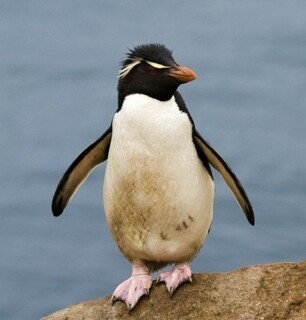Natural Causes
Robert Hanks
On 18 March last year a fox, or foxes, found their way through a damaged fence into the penguin enclosure at London Zoo and slaughtered 11 rockhopper and blackfooted penguins. News of the massacre only appeared this weekend, after the Independent got hold of a report on the zoo from inspectors at Westminster Council; since 2007, foxes have also killed a flamingo chick, a chicken and two mara (which the Independent described as ‘rodents resembling small kangaroos’; they’re more like guinea pigs on stilts).
The papers were shocked by the news, though they had some difficulty putting their fingers on the reason. For the Independent, it was a story both about the need for London Zoo to invest more in its facilities and about the imperative to close down zoos altogether. For the Daily Telegraph, ‘The revelations are certain to reignite the row over urban fox numbers which was sparked earlier this year by reports that two baby girls were attacked in their home by a fox’ – and hence, as many commenters on the paper’s website spotted, it was really a story about the consequences of New Labour’s ban on foxhunting. The Daily Maildid better, wailing about a ‘bloodbath’ and a ‘trail of destruction’ but refraining for once from drawing moral conclusions.
Infiltration by foxes and other local predators is part of zoo life. It’s because of the foxes, apparently, that the Regent’s Park penguins now inhabit a somewhat drab, shallow-banked pond rather than Berthold Lubetkin’s elegant Modernist Penguin Pool: the Lubetkin pool was always bad for penguins (too small, poor air circulation, unyielding concrete surfaces), but its Grade I listed status made alterations impossible; the last straw came when a fox started raiding and the zoo wasn’t even allowed to put up chicken wire. In April this year a fox walked over ice to get to the flamingos at Helsinki Zoo, leaving 16 of them dead.
It’s not just foxes: in the 1990s several of London Zoo’s prairie dogs, housed in an old seal pool near the Casson Elephant House, died in mysterious circumstances – their bodies were being found in the mornings lying some distance from their enclosure, their necks broken. This turned out to be the work of a local raptor, a kestrel or sparrowhawk, failing to take off properly after an overambitious stoop. Some predators are less interested in eating the inmates than in getting their share of resources: at several European zoos I’ve visited, including Regent’s Park, numbers of grey heron, sharp-elbowed as David Cameron, turn up at pelicans’ feeding-time to grab a share of the fish.
Invasions by wild predators are grist to the mill of anti-zoo organisations such as the Captive Animals’ Protection Society – look, they can’t even take care of the animals they’ve imprisoned. But being eaten is a chance most animals have to take, and in general being in a zoo cuts the risk substantially. But wild intruders are less of a problem than the supposedly domesticated ones: the two boys, aged 11 and 13, who in 2007 broke into the Camperdown Wildlife Centre in Dundee and killed a terrapin, slashed a deer with a craft knife and left a snowy owl and a brown bear ‘traumatised’; the four domestic dogs who in January 2006 burrowed under a fence to get into Belfast Zoo, killing a vicuna and gravely injuring another; the gang who let out a cheetah at Krefeld Zoo in 2002, allowing it to kill 10 of the zoo’s 13 kangaroos; the psychopath who fed rat poison to 73 animals at São Paolo Zoo in 2004; and the hosts of idiots, well-meaning or otherwise, who daily feed their picnic left-overs to zoo inmates around the world. By comparison, a fox attack is practically natural causes.

Comments
Now here's a really cuddly bedtime story about a bear called Knut.
Knut's mum refused to have anything to do with him in Berlin Zoo, so a zoo worker with a beard became his substitute mum. There was great joy in Berlin, for a bear is the local talisman, and the pictures of that little fluffy ball playing with the keeper melted the hearts of old and young. Then he turned into a real bear, all 200 kilos of him and the magic was over.
I can't think of any possible positive reasons to have zoos at all.
The total number of animals killed in British slaughterhouses in 2003 was approximately 900 million.
This included 9.35 million pigs, nearly 15 million sheep, 28 million turkeys, 20 million ducks, over 850 million chickens and 2.25 million cattle.
This equates to 2.4 million animals slaughtered every day; 100,000 an hour; 1600 per minute and 26 every second.
(Statistics from Viva).